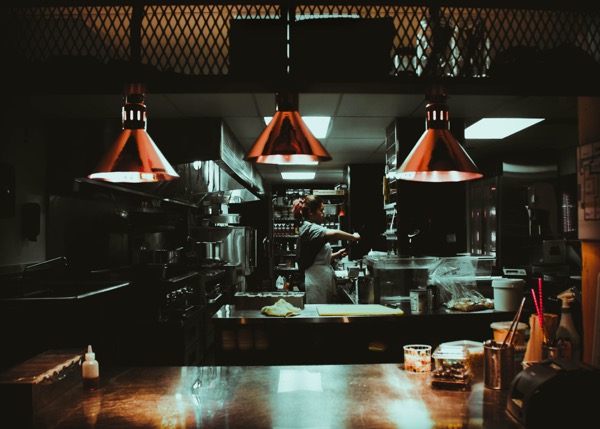
How To Market Your Accounting Firm To Restaurants
by The Ottimate Editorial Team
If your accounting firm hasn’t started working with restaurants yet, you’re missing out on a huge business opportunity. The restaurant industry accounts for about 4% of the United States GDP and is projected to employ close to 16 million people in 2024. As of December 2022, there were nearly 250,000 quick-service and full-service restaurants total across the country. When it comes to accounting for restaurants, that’s a lot of potential clientele!
Restaurants are a cornerstone of culture across the world. They provide hubs for conversation, windows into different cultures, and jobs for members of the community. A recent study found people are spending 40% of their food budget on restaurants, solidifying “dining out” as a favorite pastime for many Americans.
That’s why there’s a massive opportunity for accounting firms to target restaurant owners and operators. By marketing your services to restaurants, you’re not only entering a huge market, but you could also have a direct impact in supporting local economies.

Before you start cold calling every restaurant with a Yelp listing, start with a smart strategy. The key to great marketing is to know your audience, and restaurants are much different than the businesses you already work with. Here’s what you need to know about the restaurant industry in order to best market accounting for restaurants.
What makes restaurants different from your other clients?
In restaurant businesses, accounts payable can be messy, expenses are inconsistent, and vendors are critical. Though accounting firms are uniquely positioned to help restaurant businesses, your capabilities mean nothing if you can’t position them against the problems your potential clients face every day.
There are several differences between restaurants and other business types for your firm to consider:
Expenses fluctuate frequently
Food and labor costs are often referred to as prime costs, and they make up the lion’s share of expenses at every restaurant. Prime costs are also referred to as controllable costs because they can vary widely and make—or break—a restaurant’s profitability.

Food costs can change from day to day thanks to demand, seasonality, or even supply change shifts due to extraordinary circumstances—like the rice and wheat shortage stemming from El Niño weather across Asia and India.
Labor costs account for 20–30% of a restaurant’s total costs. But with different staffing needs for every shift and a transient workforce, those costs can vary widely—making them that much more difficult to track and manage.
Independent restaurant owners wear a lot of hats
They might not be a financial professional, but they could be balancing the books in addition to hiring and firing staff, running food to tables, and checking in on customers. Due to the small size of their businesses, these owners wear a lot of hats at the restaurant and usually don’t have one specific role. They do it all.
The restaurant industry tends to be low-tech
Small, independent restaurants tend to be run across generations, which may cause these businesses to get stuck in doing things the way they’ve always been done. Plus, there can be stigma around tech adoption: It may be seen as expensive or too hard to implement.
Paper is problematic
Think about how messy your kitchen gets when you cook. Then think about prepping and cooking for hundreds of customers per shift. And then think about putting a printed pile of important documents in the middle of it all. What would survive unscathed? Restaurant kitchens frequently receive vendor invoices, which promptly get destroyed or illegible in a busy kitchen. How, exactly, can you pay an invoice when you can’t even read what the charge is?
Invoices aren’t standardized
It’s extremely common for restaurants to use multiple vendors. But those vendor invoices vary widely: some are printed on multiple pages, others are handwritten for one specialty item. Plus, restaurants frequently buy items that need to be split between different areas of the business, like lemons that are procured both for a fish dish from the kitchen and for a signature cocktail from the bar.
Vendor relationships are critical
Restaurants can’t operate without ingredients, so they need to make sure that their accounts are in good standing. Every vendor needs to be paid the right amount at the right time—which, as you know, can be difficult due to invoice damage.

Restaurant operators are concerned with more than just ensuring their vendors are paid. Customers return to restaurants when they can expect consistent deliciousness, so ingredient quality is key. Plus, if a restaurant receives items that are spoiled or otherwise unusable, it can ruin an entire evening of service. As you can see, maintaining strong restaurant/vendor relationships is a must.
Taxes are even more complicated
As you know, tax regulations can vary by state or even local ordinance. But in restaurants, there are even more considerations, like how to tax the sale of prepared food vs. a comped staff meal. Or even the different rate that must be paid for alcohol. And what about taxes on employee tips? How about deductions, like the 10 different categories of smallwares, that may qualify?
Restaurants are prime targets for tax audits, so knowing the ins and outs of these various rules, regulations, and loopholes will quickly give you a leg up on any competition—and help protect your clients from individual liability.
Gift cards aren’t the pure profit they appear to be
Gift cards are a $534 billion industry in the United States, and restaurants will receive the lion’s share. In fact, Americans spent nearly $30 billion on gift cards during the 2023 holiday season, and restaurants made up one-third of those sales.
Hopefully, these restaurants have properly accounted for their gift card sales: they’re actually a liability on a balance sheet, and not the pure profit they might seem to be. Think of it like an IOU: a customer has given you money for a meal they or a loved one have not yet enjoyed. The selling restaurant must be prepared to make good on the promise made with a gift card.
What’s the best way to approach a potential restaurant accounting client?
Knowing the specific challenges of accounting for restaurants should give your firm more confidence you can approach this potential clientele with ease. Make sure you don’t squander the opportunity: consider these tips to approach potential restaurant clients in a thoughtful way that will give you a greater chance of closing the deal.
Call at different hours
Unless they’re running a large enterprise business, it’s extremely unlikely that restaurant owners and operators are working a 9-5 schedule. At 9 am, the typical operator might still be asleep; by 5 pm, they’re less than halfway into a working shift and just seeing the start of dinner business trickling in.

It’s a huge miss to reach out to restaurant folks during “standard” working hours. You might never get a response—or, even worse, you could alienate a potential revenue stream. To get direct to the decision-maker, try walking into a restaurant at the start of a lunch shift, around 11 am-12:30 pm, or between lunch and dinner shifts. They’ll be less strapped for time and more likely to talk to you face-to-face than a cold call that can easily be brushed aside—or simply forgotten about during the hustle and bustle of any given work day.
Speak like a human
Get rid of your finance jargon. As you know, restaurant owners and operators most likely do not have the same financial background and experience as you and your firm do. Don’t go into a restaurant expecting to speak to its decision-maker the same way you would a finance manager or accountant at a white-collar business.
When approaching restaurant businesses, speak in plain language. If possible, try to do some research on the restaurant and its ownership or management team before going in to try and sell your services. Understanding exactly who you’re approaching can help you tailor your language from being too simple or too complex; the last thing you want is for you or your firm to come off as condescending. If little to no information is available about the background of the folks you want to speak to, use context clues over the course of your conversation to provide indicators when you might want to use more specificity or take your foot off the gas.
Name the pain points
Restaurant owners are smart, savvy, and know how to make decisions on the fly. Their time is extremely limited, and they know exactly where they need to invest it. When meeting with these potential clients, don’t go into a generic sales pitch. Instead, name exactly the types of things you know they’re worried about: cash flow, taxes, and accounts payable.

By starting strong and identifying exactly the types of issues that you know plague the restaurant industry, operators know that you’ve done your research and are less likely to waste their time. You might even start with a small tidbit of information, like a recent jump in cost for specific ingredients that you know will have a big impact on their business, to immediately earn trust—or at least some buy-in to hear you out.
Don’t make assumptions
Just because the restaurant industry experiences similar pain points doesn’t mean that all restaurants are experiencing all of them at the same time. Sometimes, restaurants have a good control on food cost, but labor becomes increasingly difficult to manage; others might offer salaried, steady employment, but still can’t work their way through a two-year-old tax audit.
Use your opening with common pain points to explore what, exactly, the operator is currently struggling with, what they’ve experienced in the past, and what they fear for the future. Never make an assumption about their existing state of affairs: you risk offending folks who have already spent years trying to solve the problems you think you’re unearthing.
How can my firm become irresistible to restaurant clients?
You know the industry pain points and you know how to approach them with tact. But how do you make your firm sound so irresistible, so helpful, that restaurant clientele has no choice but to say “yes” to your services?
Introduce helpful, low-lift tech
Invoice automation can be a godsend for restaurants struggling with accounts payable processes. Though the industry tends to be hesitant to adopt tech solutions, invoice automation solutions are actually incredibly user-friendly. All employees need to digitize invoices is a cell phone with photo capabilities.
Bookkeeping hours are reduced. Invoices are retained (and legible!). General Ledger coding happens automatically—even for those items that might be attributed to multiple departments. The business is more prepared for audits thanks to a searchable database. And both you and the restaurant owner have immediate access to more data, ultimately giving both of you more insight into areas for improvement.
Benchmark performance to peers
With average restaurant profitability hovering around 3–5%, restaurant owners and operators might think they’re in trouble if they dip below that. Who knows, they might panic if profitability is higher than that and assume they’ve forgotten a tax bill or large vendor payment!
There’s an incredibly wide variety of factors that play into a restaurant’s success. Restaurant owners typically don’t have a lot of insight into how their peers in a local area are faring, nor do they know what those restaurant/vendor relationships look like to determine food pricing.
Sharing anonymized data across restaurant clients can help all of them be better equipped with insider information that can enable them to make more informed business decisions. For example, if you know one vendor has an agreement with Restaurant A to sell cases of strawberries for $8/each, but Restaurant B recently agreed to a rate of $7.50, you can give Restaurant A the heads up that it might be time to renegotiate.
Find working capital
Want to be a hero? Uncover working capital for restaurant clients. With limited profitability, these business operators don’t have much active access to cash and may be more likely to seek investments or loans to help keep more money moving.
Whether a restaurant owner wants to expand or simply be able to pay for a much-needed kitchen repair, cold hard cash can be hard to come by. Your firm’s services can help them uncover the areas where there’s more access to cash and how they can do more for their restaurant with fewer monetary resources.
Reducing food costs is just one way to approach this; exploring inventory waste and room for labor improvements are two others. You can also recommend virtual card payments that earn them cash back on eligible purchases. Anywhere you can find a few extra dollars in savings can mean a lot to an operator who’s struggling to decide if they should pay their latest tax bill or their staff.
Speak on what you know
You work with businesses to provide expert financial guidance and advice that they don’t have in house. Although you now have a good foundational understanding of the restaurant industry, its challenges, and how to approach the people working within it, you are by no means a hospitality expert.
Speak as a financial expert and not an expert in all things restaurant-related. Just as you’ve spent years on your financial education, they’ve spent years perfecting menus, ambiance, and customer experiences. Before giving unsolicited advice about some aspects of the business, take a temperature check to see if your restaurant client is even open to hearing it.
Think about a client that has a lot of high florist bills. Rather than saying “This line item is out of control; you need to cut your floral budget,” try: “Your florist bill looks higher than what I’ve seen from your peers. Is there a reason you invest so heavily in flowers?” They could have clientele who have repeatedly commented on the gorgeous fauna, they could be an homage to an owner’s loved one, or it could just be an out of control budget! When in doubt, just ask.
Ready, set, go to market
This guide should give you the foundational knowledge you need to approach restaurant clients with confidence. Restaurants are the backbone of urban America, and you have a big opportunity to keep these cultural hubs running. So get ready, get set, and go to market with a new strategy to build lasting relationships with restaurant clientele!
Stay up to date on the latest news in AP automation and finance
Related

